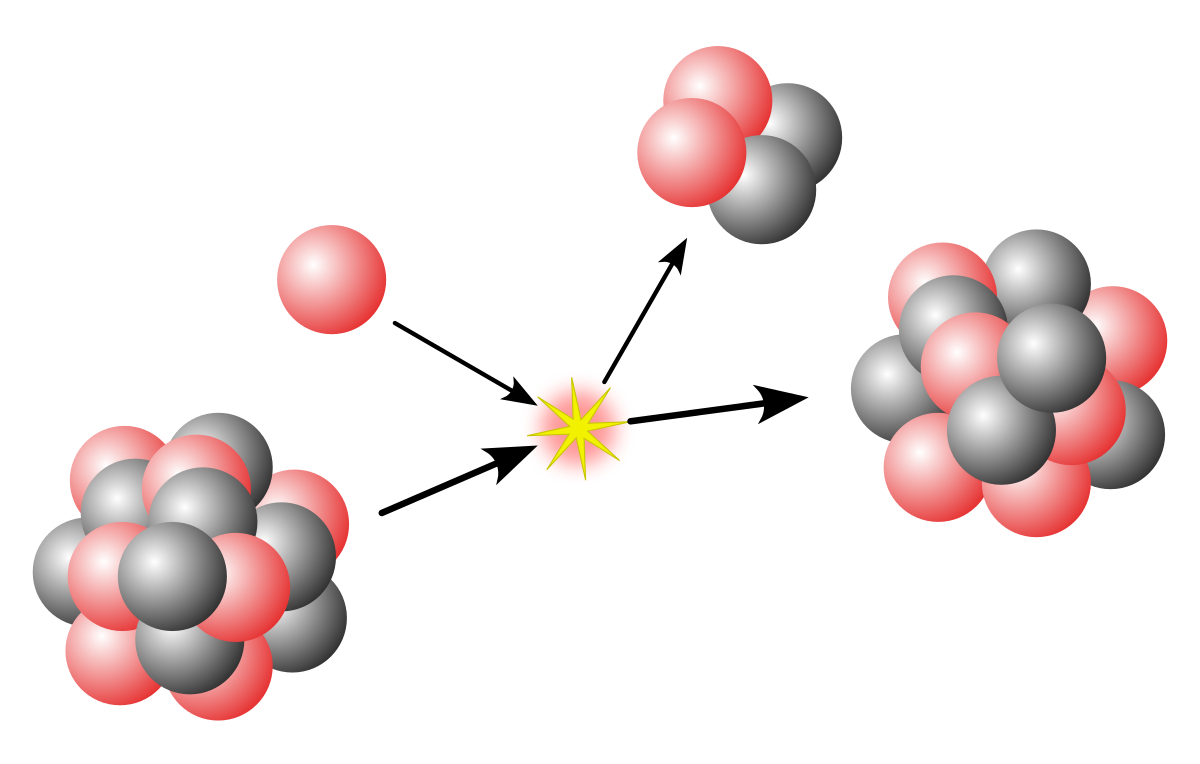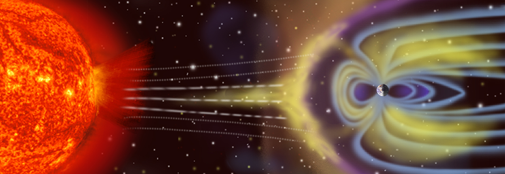In terms of nuclear reactions, two mechanisms make it possible to produce cosmogenic nuclides:
- The spallation
- The muonic capture
The high-energy galactic cosmic rays (between 1 GeV for a helion and billions of TEV for iron nuclei) are mainly composed of protons that can penetrate up to several meters in the rocks. Any smaller meteoroid will be totally irradiated by this corpuscular bombardment.
The spallation is a nuclear reaction in which a high energy proton (or radiation of at least 50 MEV) collects a core, ejecting one or more protons and/or neutrons. This reaction generally leads to the fission of the atomic core.
The second mechanism is muonic capture. The negative muons (μ–) of the lepton family are elementary particles whose rest energy is 10 times lower than that of protons or neutrons (~106 MeV/c2 againts ~938 MeV/c2). When they are decelerated, the negative muons can be captured by the atoms and generate the production of a neutron and a neutrino, sometimes accompanied by a photon gamma so that the atom regains its stability.
When the captured muon neutralizes a proton (and more rarely a neutron) we talk about nuclear evaporation. This reaction provides energy to the core. As for the spallation, the ejection of nucleons following the capture of a negative muon generates a lighter core and the production of radioactive ions.
Following one or the other reaction, a large number of normally rare isotopic species, both stable and radioactive, are produced. They include stable isotopes of rare gases (helium-3, neon-21, argon-38 and krypton-83) and various long-lived radioactive isotopes, including beryllium-10 (half-life of 1.6 x 106 years), aluminum-26 (7.3 x 105 years old), chlorine-36 (3 x 105 years old), calcium-41 (105 years old), manganese-53 (3.7 x 106 years old) and Krypton-81 (2.1 x 105 years old).


tonka
luh tonka
oops
hmm
Rz
wef